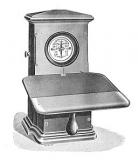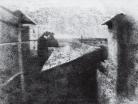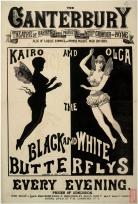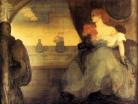Little Magazines And/As New Media Timeline
Created by Lorraine Janzen Kooistra on Tue, 05/05/2020 - 12:48
Part of Group:
This timeline places little magazines within a chronology of technological innovation in media, spanning from print to digital culture.
Timeline
Chronological table
| Date | Event | Created by | Associated Places | |
|---|---|---|---|---|
| Spring 1827 to 1841 |
Invention of PhotographyThe invention of photography opened a new chapter in the history of printing and communication. It’s been quickly replaced instead of painting, wood, and metal engraving in the printing process. Precision, speed, and accuracy were the main characteristics of photograph versus other techniques. Photography could take printing techniques to a higher level of quality and quantity. Tone separation and increasing the tonalities were some achievements that were the most accurate and precise printing technique in the mass printing industry and especially printing media like magazines. Joseph Nicéphore Niépce made the first photograph in 1827 in Le Gras in Burgundy region of France through the window of his small lab. It took 8 hours to record the image on a light-sensitive metal plate. After him, Louis-Jacques-Mandé Daguerre in 1839 made a faster and sharper image on metal named daguerreotype. Two years later in London Fox Talbot made the first photograph on paper named Calotype or Talbotype. However, the first photograph that could be published in a magazine was 'Barricades on rue Saint-Maur'. This photo published in L’Illustration in July 1848 by engraving technique.
Bibliography: Rosenblum, Naomi, and Diana C. Stoll. A World History of Photography. Abbeville Press Publishers, 2019. https://www.metmuseum.org/toah/hd/lith/hd_lith.htm https://journals.openedition.org/etudesphotographiques/347 https://en.wikipedia.org/wiki/Photojournalism https://www.oldbookillustrations.com/techniques/ https://www.oldbookillustrations.com/dictionary/contents/index |
Masoud Eskandari | ||
| circa. 1830 |
Invention of the Telegraph Single Needle Telegraph from Rankin Kennedy, Electrical Installations, Vol V, 1903. Wikimedia Commons The invention of the telegraph could not have occured without the contributions of William F. Cooke and Charles Wheatstone, which included developments in railway signaling and message transmission in the 1830s. Additionally, the creation of the telegraph became possible through Samuel Morse’s invention of the Morse Code in 1838. The contributions of these inventors created a device, which sent signals over a cable network between two points using electro-magnetic impulses. By the late 1840s, telegraph companies, which were privately owned, began to work with news agents. Content was delivered quickly and efficiently. Hence, the sense of time was altered with the introduction of the telegraph into society. This contributed to the fast-paced dissemination of news, periodicals, and casual messages to family and friends who lived abroad. Europe and the United States became linked by their first telegraph connection in 1866. While Australia and Britain were connected in 1872 by having the telegraph connection pass through India. In Britain the Post Office took over the telegraph network system from privately owned companies, making the telegraph nationalized in 1870. However, the international cables were still privately operated. Sources: "The Telegraph." C19: The Nineteenth Century Index. Retreived from http://c19index.chadwyck.com.ezproxy.lib.ryerson.ca/fullrec/fullrec.do?i... Beetham, M. (2015). "Time: Periodicals and the Time of the Now." Victorian Periodicals Review. 48.3: 323-342. |
Elizaveta Poliakova | ||
| Winter 1850 to Winter 1850 |
The Germ: Thoughts Towards Nature in Poetry, Literature, and ArtThe Germ began as an idea by Dante Gabrielle Rossetti, but it eventually became a collective initiative supported by artists, critics and poets associated with the original Pre-Raphaelite circle. Comprised of no more than 50 pages, its first volume was printed in January of 1850 by G. F. Tupper and was published by Aylott and Jones. This monthly magazine brought together works of art and literature by contemporary artists, including poems by the only female contributor, Christina Rossetti, whose work appeared under the pseudonym of 'Ellen Alleyn'. Poetry acted as a uniting leitmotif, around the theme of which other works of literature and visual art were carefully organized. Edited by William Michael Rossetti who also acted as the first chronicler of the Pre-Raphaelite Brotherhood, The Germ upheld the artistic aspirations of the Brotherhood which placed particular emphasis on the natural world and celebrated the artist as creator. Although the magazine itself was short-lived with merely four numbers published, it had immense impact on the future design and creation of findesiècle magazines and “little magazines” of the late Victorian period. |
Azadeh Monzavi | ||
| 1882 |
Music Halls Become Popular CultureThrough the 1800’s, music halls transformed from established frequented only by the wealthy, to providing entertainment which marketed to, and enticed, a broad spectrum of British society. By paying as little as one penny (with many shows only asking two or three pence), a man, woman, or child of any socioeconomic class was welcomed to a packed, often smoky and even boozy music hall which featured a myriad of attractions ranging from samples from popular operas, to acrobatics, and magic shows. Many performances sought to relate to the everyday lives of patrons, featuring songs written for contemporary audiences. Music halls were unique in that they were respectable entertainment (as opposed to variety shows common to London’s East-End), but affordable to most people (as opposed to operas and the like). The mainstreaming of music halls is an example of how culture began to transgress ordinary class divides. The included image is an advertising broadsheet for two entertainers who, with the help of wires that were allegedly invisible to the audience, flew throughout the halls as part of their spectacle. The show was featured at the Canterbury music hall, which opened in 1850. Similar advertisements, seeking a broad audience, would have been posted throughout London as well as in the little magazines covered in this course. Sources Picard, L. (2014, February 14). Popular culture. Retrieved from https://www.bl.uk/victorian-britain/articles/popular-culture Poster advertising Kairo and Olga, the black and white butterflys, at the Canterbury Theatre of Varieties, London. (2014, April 23). Retrieved from https://www.bl.uk/collection-items/poster-advertising-kairo-and-olga-the... |
Jade Hines | ||
| 1903 |
Le Premier Ball by Charles Conder‘Le Premier Bal’ by Charles Conder 1890. Watercolour on silk. Currently on display at the Aberdeen Art Gallery and Museum, Scotland. Reproduced in 1903 by the Swan Engraving Company, for The Pageant (vol. 2, p. 175) by halftone process. Published by Messrs. Henry and Company, edited by C. Hazelwood Shannon (art) and Gleeson White (literature). Hyperlink: https://archive.org/stream/Pageant1897#page/n193/mode/2up Translated as ‘The First Ball’, the work is an impressionist watercolour painted towards the end of the nineteenth century. The figure on the right is a young woman, whose alabaster white skin and delicate features are the most well lit in both the original and reproduction. The woman stands next to a drawn curtain, beneath an archway at a masquerade ball (indicated by the mask the woman holds). Opposite her, is a man dressed in flowing robes, who appears to have some sort of garland around his neck. Neither the woman or the man are looking at each other, their attention being drawn off the page to the left and right respectively. Combined with the title, this suggests that there are more people vicinity. The scene is not pensive or tense, the woman's body language is relaxed enough to suggest that this is a common scene for her. A notable difference with the reproduction is the contrast of the background. While the household hallway beyond the curtain (suggesting that the woman and man are at the edge of a ball, perhaps the first of the season), the reproduction’s starker colour scheme initially looked as if the pair stood backstage as the black and whites add a depth which made the flower vases appear to be standing on a large wooden platform (rather than a bench). Original image source: Wikimedia Commons Additional image/ artist background: Artist Footsteps.com |
Jade Hines | ||
| 1970 to 2018 |
Digital ArtThe advent of computers has led to the creation of an entirely new genre of art – digital art. Just as the renaissance was a rejection of the medieval ideals, digital art is a rejection of the traditional concept of what art can be. Instead of utilizing traditional mediums such as paint, digital art is created through technology. Artists have been able to use computers to expand their imaginations and be creative in a way that was previously limited by human ability. This has contributed to the creation of new themes and techniques in contemporary art, echoing the impact of the development of oil paints during the Renaissance.
Sources Stokstad, Marilyn, and Michael W. Cothren. Art History. Upper Saddle River, NJ: Pearson/Prentice Hall, 2011. Print. Wikipedia, the free encyclopedia. “Digital Art.” Wikipedia, Wikimedia Foundation, Inc. , 4 Mar. 2018, en.wikipedia.org/wiki/Digital_art. Victoria and Albert Museum. “A History of Computer Art.” Victoria and Albert Museum: The World's Leading Museum of Art and Design, Victoria and Albert Museum, London, 17 July 2013, www.vam.ac.uk/content/articles/a/computer-art-history/. |
Lauren Krieger | ||
| Mar 1989 |
Invention of the World Wide WebIn March of 1989, Sir Tim Berners-Lee began the layout of what would later be the World Wide Web. He graduated from Oxford and became a software engineer at CERN shortly after. While working for CERN, Berners-Lee created the proposal for the World Wide Web. He created HTTP, HTML, the first web browser, and the first HTTP server. This allows people to read and write on the internet via the use of computers. After its creation, the World Wide Web was primarily used for scientific researchers or science departments at universities. With time though there became more web servers all around the world. The World Wide Web has had such a drastic role in the current world of online technology and data collection. Sir Tim Berners-Lee was hugely influential and will remain an icon in the online world for many years to come. Image source: http://webfoundation.org/about/vision/history-of-the-web/ |
Caroline Brown |





